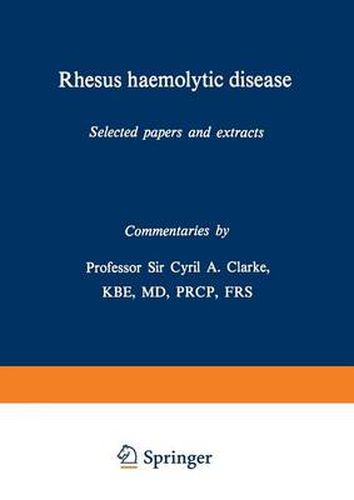Readings Newsletter
Become a Readings Member to make your shopping experience even easier.
Sign in or sign up for free!
You’re not far away from qualifying for FREE standard shipping within Australia
You’ve qualified for FREE standard shipping within Australia
The cart is loading…






This title is printed to order. This book may have been self-published. If so, we cannot guarantee the quality of the content. In the main most books will have gone through the editing process however some may not. We therefore suggest that you be aware of this before ordering this book. If in doubt check either the author or publisher’s details as we are unable to accept any returns unless they are faulty. Please contact us if you have any questions.
Jaundice ofnewbom infants was described by several authors in the 17th century. The condition, however, was usually thought of as being similar to adult jaundice and due ro occlusion of the bile ducts by ‘glutinous humours’. On the other hand, some writers reported on the fact that more than one consecutive baby was often affected, and there is a classic example of the disease in twins written by Louyse Bourgeois, the midwife of Marie de Medici, in 1609. It was not until early in the 20th century that it was realised that the common link between these familial cases was anaemia, and later still that this was of the haemolytic type. The breakthrough, in terms of an idea, came in 1938, when Darrow postulated that the baby’s red cells were destroyed by an immune reaction on the part of the mother, the result of immunisation by paternal factors in the fetus. Shortly afterwards Wiener discovered an entirely new blood group system, ‘Rh’, and it was found that it was in compatibility within this system that was responsible for the vast majority of cases of haemolytic disease of the newborn.
$9.00 standard shipping within Australia
FREE standard shipping within Australia for orders over $100.00
Express & International shipping calculated at checkout
This title is printed to order. This book may have been self-published. If so, we cannot guarantee the quality of the content. In the main most books will have gone through the editing process however some may not. We therefore suggest that you be aware of this before ordering this book. If in doubt check either the author or publisher’s details as we are unable to accept any returns unless they are faulty. Please contact us if you have any questions.
Jaundice ofnewbom infants was described by several authors in the 17th century. The condition, however, was usually thought of as being similar to adult jaundice and due ro occlusion of the bile ducts by ‘glutinous humours’. On the other hand, some writers reported on the fact that more than one consecutive baby was often affected, and there is a classic example of the disease in twins written by Louyse Bourgeois, the midwife of Marie de Medici, in 1609. It was not until early in the 20th century that it was realised that the common link between these familial cases was anaemia, and later still that this was of the haemolytic type. The breakthrough, in terms of an idea, came in 1938, when Darrow postulated that the baby’s red cells were destroyed by an immune reaction on the part of the mother, the result of immunisation by paternal factors in the fetus. Shortly afterwards Wiener discovered an entirely new blood group system, ‘Rh’, and it was found that it was in compatibility within this system that was responsible for the vast majority of cases of haemolytic disease of the newborn.